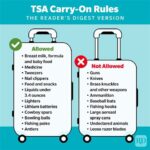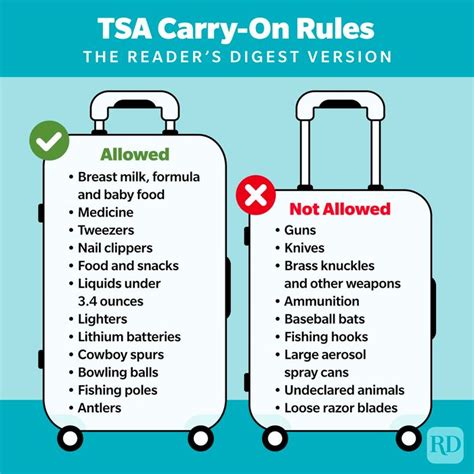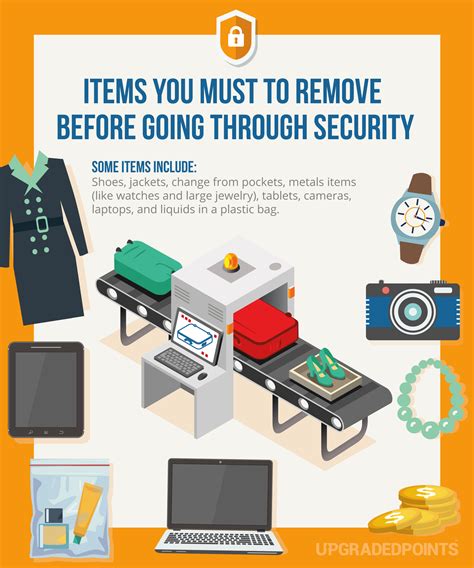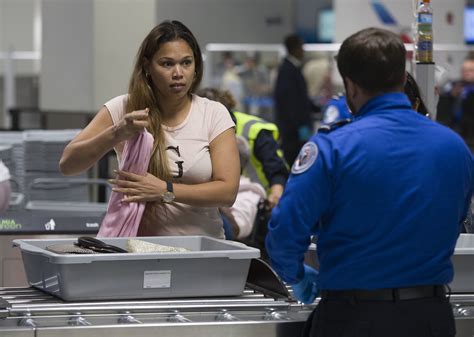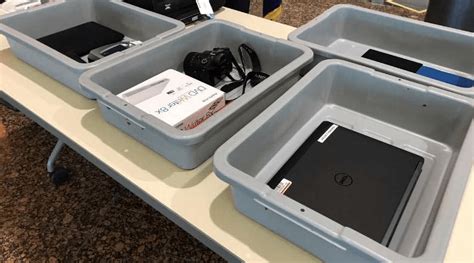
Wallets are the most frequently stolen item at airport security checkpoints, prompting security experts to advise travelers to keep them secured during the screening process. The seemingly innocuous bins provided by the Transportation Security Administration (TSA) can become a prime target for opportunistic thieves preying on distracted passengers.
Travelers often place wallets, phones, keys, and other valuables into these bins to comply with security protocols requiring the removal of metal objects from pockets. This temporary dis Possession creates a window of opportunity for theft, as individuals are focused on removing shoes, laptops, and other items, often losing sight of their belongings in the process. According to security expert Tom Meehan, Chief Strategy Officer and Chief Information Security Officer at ControlTek, “The number one item that is stolen in those bins is wallets.”
Meehan advises a proactive approach to safeguard valuables: “Before you get into the security line, put [your wallet] away. Put it in your carry-on bag, zip it up.” This simple precaution significantly reduces the risk of theft by keeping wallets out of sight and physically secured. The advice highlights a vulnerability within the TSA screening process, where the emphasis on speed and efficiency can inadvertently create opportunities for criminal activity. By taking personal responsibility and exercising caution, travelers can mitigate the risk of becoming a victim.
The TSA has implemented various measures to deter theft and enhance security at checkpoints, including surveillance cameras and increased staff presence. However, the agency also emphasizes the importance of individual vigilance. Travelers are encouraged to maintain awareness of their surroundings and keep a close watch on their belongings throughout the screening process. The combination of TSA efforts and individual precautions is crucial to maintaining a secure environment at airports.
While specific data on the number of wallets stolen at TSA checkpoints is not publicly available, anecdotal evidence and expert observations suggest that it is a persistent problem. Law enforcement agencies at major airports actively investigate theft reports and work to identify and apprehend perpetrators. The consequences for stealing from fellow travelers can be severe, ranging from fines and imprisonment to a permanent criminal record.
Theft at airport security checkpoints is not a new phenomenon, but the increasing volume of travelers and the fast-paced nature of the screening process have likely exacerbated the problem. As airports become more crowded and security procedures more complex, the opportunities for theft may increase. Therefore, it is essential for travelers to remain vigilant and take proactive steps to protect their valuables.
Beyond wallets, other items commonly stolen from TSA bins include phones, jewelry, and electronic devices. These items are often expensive and easily resold, making them attractive targets for thieves. The anonymity of the airport environment and the constant flow of people can also make it difficult to identify and apprehend perpetrators.
The TSA provides several tips for travelers to protect their belongings at security checkpoints:
- Keep your belongings within sight at all times.
- Place your valuables in a carry-on bag rather than in a bin.
- Be aware of your surroundings and report any suspicious activity to TSA personnel or law enforcement.
- Consider using a money belt or other secure storage device for your wallet and other valuables.
- If you believe your belongings have been stolen, immediately report the incident to TSA personnel and file a police report.
By following these simple precautions, travelers can significantly reduce their risk of becoming a victim of theft at airport security checkpoints. The TSA also continues to refine its security procedures and implement new technologies to deter theft and enhance the overall security of the airport environment.
Further Considerations and TSA Protocols
The TSA’s primary mission is to ensure the safety and security of the nation’s transportation systems. While theft prevention is not the agency’s primary focus, it is an important consideration in the design and implementation of security procedures. The TSA works closely with airport authorities and law enforcement agencies to address theft and other criminal activity at airports.
The TSA employs a layered approach to security, which includes a combination of technology, procedures, and personnel. Security checkpoints are equipped with advanced imaging technology, explosives detection systems, and other tools to detect prohibited items. TSA officers are trained to identify potential threats and to respond to security incidents. The agency also utilizes behavior detection techniques to identify individuals who may pose a risk.
The TSA’s screening procedures require passengers to remove certain items from their carry-on baggage and place them in bins for X-ray screening. These items typically include laptops, liquids, and metal objects. The purpose of this requirement is to allow TSA officers to get a clear view of the contents of carry-on bags and to identify any prohibited items.
While the TSA’s screening procedures are designed to enhance security, they can also create opportunities for theft. The bins used to transport items through the X-ray machine are often unattended for brief periods of time, and passengers may become distracted while removing shoes, belts, and other items. This creates a window of opportunity for thieves to snatch wallets, phones, and other valuables.
To address this vulnerability, the TSA has implemented several measures to deter theft at security checkpoints. These measures include:
- Increased surveillance: TSA checkpoints are equipped with surveillance cameras that monitor passenger activity.
- Enhanced staffing: The TSA has increased the number of officers assigned to security checkpoints.
- Improved training: TSA officers receive training on how to identify and prevent theft.
- Public awareness campaigns: The TSA conducts public awareness campaigns to educate travelers about the risk of theft and how to protect their belongings.
Despite these efforts, theft remains a persistent problem at airport security checkpoints. The TSA encourages travelers to take personal responsibility for protecting their belongings and to report any suspicious activity to TSA personnel or law enforcement.
Long-Term Solutions and Technological Advancements
Addressing theft at TSA checkpoints requires a multi-faceted approach that includes technological upgrades, procedural improvements, and increased public awareness. The implementation of advanced screening technologies could reduce the need for passengers to remove items from their carry-on bags, thereby minimizing the opportunity for theft. For example, computed tomography (CT) scanners can create 3D images of carry-on baggage, allowing TSA officers to identify prohibited items without requiring passengers to unpack their bags.
The deployment of automated screening lanes can also improve security and reduce the risk of theft. These lanes use conveyor belts to automatically transport items through the X-ray machine, minimizing the need for passengers to handle their belongings. Automated screening lanes can also be equipped with sensors that detect when an item has been removed from a bin, alerting TSA officers to potential theft.
In addition to technological upgrades, procedural improvements can also help to reduce theft at TSA checkpoints. The TSA could implement stricter rules regarding the placement of valuables in bins and require passengers to keep their belongings within sight at all times. The agency could also increase the number of officers assigned to monitor the bins and to assist passengers with the screening process.
Public awareness campaigns are also essential to preventing theft at TSA checkpoints. The TSA should continue to educate travelers about the risk of theft and how to protect their belongings. These campaigns could include posters, videos, and social media messages that provide tips on how to secure valuables and report suspicious activity.
The Psychology of Airport Theft
Understanding the psychology behind airport theft is crucial in developing effective prevention strategies. Thieves often target distracted or vulnerable individuals, exploiting the chaotic and fast-paced environment of airport security checkpoints. Passengers are often focused on complying with TSA procedures, removing shoes, belts, and laptops, which can make them less aware of their surroundings.
The anonymity of the airport environment also contributes to the problem of theft. Thieves may feel that they are less likely to be caught in a crowded airport, where there is a constant flow of people. The temporary nature of the airport setting can also create a sense of detachment, making it easier for thieves to rationalize their actions.
To counter these psychological factors, it is important to create a sense of community and vigilance at airport security checkpoints. Passengers should be encouraged to look out for one another and to report any suspicious activity to TSA personnel or law enforcement. The TSA can also implement measures to increase the visibility of security personnel and to deter potential thieves.
The Role of Airport Authorities and Law Enforcement
Airport authorities and law enforcement agencies play a critical role in preventing and investigating theft at airport security checkpoints. Airport authorities are responsible for maintaining a safe and secure environment at the airport, including implementing security measures to deter theft. Law enforcement agencies are responsible for investigating theft reports and apprehending perpetrators.
Airport authorities can work with the TSA to improve the design and layout of security checkpoints, ensuring that they are well-lit and equipped with surveillance cameras. They can also increase the presence of security personnel in the checkpoint area and implement measures to control access to the bins used for screening items.
Law enforcement agencies can conduct undercover operations at airport security checkpoints to identify and apprehend thieves. They can also work with the TSA to develop and implement training programs for TSA officers on how to identify and prevent theft.
The Impact of Theft on Travelers
Theft at airport security checkpoints can have a significant impact on travelers. In addition to the financial loss of stolen items, travelers may experience emotional distress and inconvenience. They may also have to spend time filing police reports and replacing stolen documents.
The impact of theft can be particularly severe for travelers who are already stressed or anxious about flying. The theft of a wallet or phone can add to their anxiety and make it more difficult for them to cope with the challenges of air travel.
To minimize the impact of theft on travelers, it is important to provide support and assistance to victims. The TSA and airport authorities should have procedures in place to assist travelers who have had their belongings stolen. This may include providing them with information on how to file a police report, replace stolen documents, and access support services.
The Future of Airport Security and Theft Prevention
The future of airport security will likely involve a greater reliance on technology and automation. Advanced screening technologies, such as CT scanners and automated screening lanes, will help to improve security and reduce the risk of theft. Artificial intelligence (AI) and machine learning (ML) can also be used to analyze security footage and identify suspicious activity.
The TSA will also need to continue to adapt its procedures to address emerging threats and to stay ahead of criminals. This may involve implementing new security measures, enhancing training programs for TSA officers, and working more closely with airport authorities and law enforcement agencies.
Ultimately, preventing theft at airport security checkpoints requires a collaborative effort involving the TSA, airport authorities, law enforcement agencies, and travelers. By working together, we can create a safer and more secure environment for air travel.
Specific Items to Secure Beyond Wallets
While wallets are the primary target, it’s crucial to recognize that other valuables are also at risk in the TSA bins. Smartphones, due to their high value and portability, are a frequent target. Jewelry, particularly easily removable items like rings, necklaces, and bracelets, should be secured before entering the security line. Loose cash, often placed in bins alongside wallets, is an obvious temptation for thieves. Small electronics, such as tablets, smartwatches, and portable gaming devices, are also vulnerable due to their resale value. Identification documents, including passports and driver’s licenses, while less easily resold, are a major inconvenience if stolen and can be used for identity theft. Credit cards, if removed from a wallet, become especially vulnerable and should be kept secure.
Best Practices for Securing Valuables:
- Pre-Security Consolidation: Before approaching the security line, take a moment to consolidate all valuables into a single, secure bag or pocket. This minimizes the number of loose items that could be targeted.
- Zip-Top Bags: Using clear, zip-top bags within your carry-on can further organize and protect smaller items like jewelry and loose cash.
- Money Belts or Pouches: For a higher level of security, consider using a money belt or hidden pouch worn under clothing.
- Carry-On Placement: Place your carry-on bag with valuables directly in front of you on the conveyor belt, maintaining visual contact as much as possible.
- Post-Security Check: Once through security, double-check that you have all your belongings before leaving the area.
Legal Ramifications of Theft
Theft at airport security checkpoints is a serious crime with significant legal consequences. Depending on the value of the stolen items and the jurisdiction, perpetrators may face charges ranging from petty theft to grand larceny. Penalties can include fines, imprisonment, and a criminal record. A conviction for theft can have long-term consequences, affecting employment opportunities, travel privileges, and even the ability to obtain loans or credit.
Airports are generally considered high-security environments, and theft within these areas may be subject to enhanced penalties. Law enforcement agencies at major airports have dedicated units that investigate theft reports and work to apprehend perpetrators.
Travel Insurance Considerations
Travel insurance policies may offer coverage for theft of belongings while traveling, including at airport security checkpoints. However, it’s important to carefully review the terms and conditions of your policy to understand the coverage limits, exclusions, and claims procedures.
Many travel insurance policies require a police report to be filed in order to make a claim for theft. It’s also important to document the value of your belongings with receipts or other proof of ownership. Some policies may have specific exclusions for theft of unattended items, so it’s crucial to take precautions to protect your belongings at all times.
The Psychological Impact on Victims of Theft at Airports
Beyond the financial loss, being a victim of theft at an airport can have significant psychological consequences. The sense of violation and vulnerability can lead to increased anxiety, stress, and a diminished sense of security, particularly when traveling alone. Trust in others can be eroded, and the experience can cast a shadow over the entire trip.
The stress of dealing with the aftermath, such as filing police reports, contacting credit card companies, and replacing stolen documents, can further exacerbate these feelings. The feeling of being targeted in a public space, where one expects a degree of safety, can be particularly unsettling.
FAQ Section:
Q1: What is the most common item stolen at TSA security checkpoints?
A: According to security expert Tom Meehan, wallets are the most frequently stolen items at TSA security checkpoints. He advises travelers to secure their wallets in their carry-on bags before entering the security line.
Q2: What steps can I take to protect my valuables at airport security?
A: The TSA recommends keeping your belongings within sight at all times, placing valuables in a carry-on bag rather than in a bin, being aware of your surroundings, and reporting any suspicious activity. Consider using a money belt or other secure storage device.
Q3: What should I do if I think my belongings have been stolen at a TSA checkpoint?
A: Immediately report the incident to TSA personnel and file a police report. Document the stolen items and their value for insurance purposes, if applicable.
Q4: Does the TSA have measures in place to prevent theft at security checkpoints?
A: Yes, the TSA utilizes surveillance cameras, increased staffing, and improved training to deter theft. They also conduct public awareness campaigns to educate travelers on how to protect their belongings.
Q5: Does travel insurance cover theft at airport security?
A: Travel insurance policies may cover theft, but it’s important to review the policy’s terms and conditions, coverage limits, and exclusions. A police report is usually required for filing a claim.
